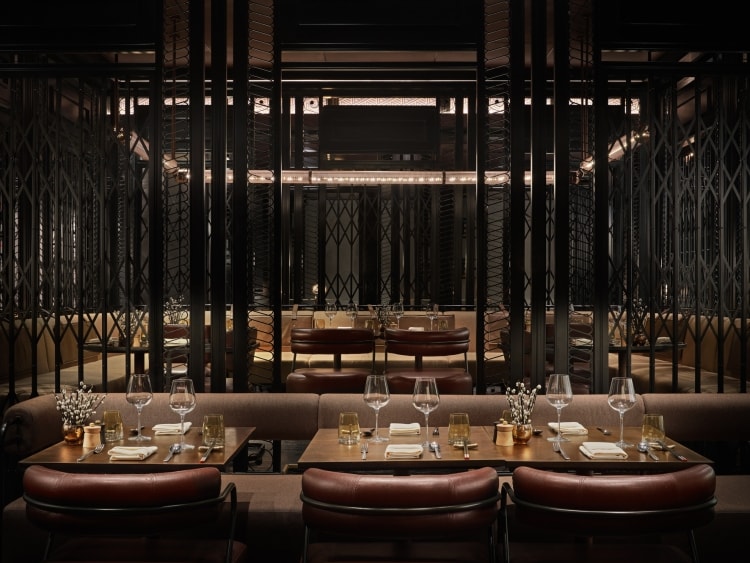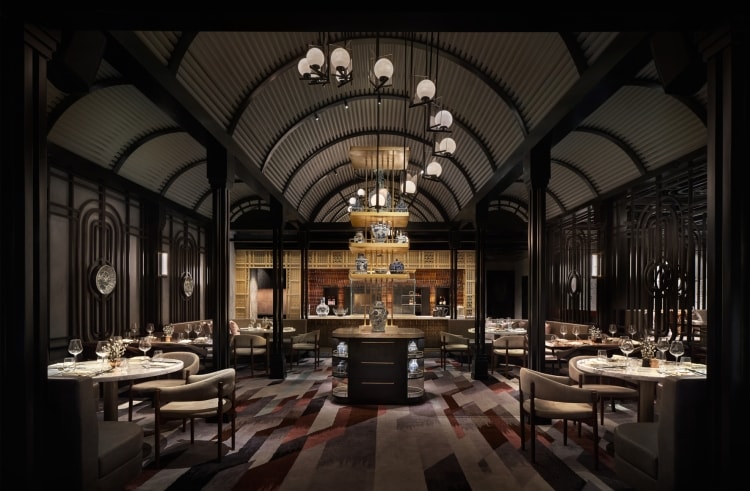The Chinese National at Swissôtel Jakarta
A Singapore-based design firm used four quintessentially Chinese inventions as catalysts for the planning and executing of four new F&B venues in a high-end hotel in Jakarta.
It’s an all too common quandary in the world of hospitality, when a hotel needs a huge space to serve breakfast in the morning but doesn’t want that space sitting half-vacant for the rest of the day.
That was one of the biggest hurdles that EDG’s design team had to hurdle when they dreamed up a series of four drinking-and-dining establishments for the Swissôtel Jakarta, in collaboration with ASRI, a successful developer in Indonesia, and the Accor group.
Part of the solution to the design dilemma came from having hidden panels that can be used to separate the big breakfast area into four different venues. Each of them has been endowed with sui generis features that make them into their own distinct entities, serving different kinds of Chinese cuisine in spaces that emphasize these cultural peculiarities through design motifs and visual story-spinning.

The invention of the letterpress served as the inspiration for this this tea house by day and cocktail bar by night.
All images © Owen Raggett
The invention of the letterpress supplied the creative impetus for the venue named after this Chinese invention. Serving as a teahouse by day before metamorphosizing into a cocktail bar after dusk, which guests access by way of a secret entrance, the Letterpress is steeped in China’s teetotaling history. Redolent of the Tang Dynasty, the designers have this given this bygone era a new lease on life with exquisitely detailed wood paneling on the ceilings, museum-worthy mirrors and Chinoiserie panels.

Dumpling and noodle shop Iron and Needle features white marble dining tables, stained glass and painted wood paneling inspired by old Chinese tea houses.
Another Chinese invention, the compass, sparked the imaginations of EDG’s team into creating the Iron and Needle, a noodles and dumplings restaurant with a casual air. Using the compass as a starting point, the design team incorporated stained glass, tables of white marble and yet more wood paneling as finishing touches. The stacked-up residential look of Hong Kong’s apartment buildings also adds another flavor to the dim sum menu.

Black Powder Red evokes the beauty of aged materials and corrosive details, creating a dark yet warm atmosphere with varieties of copper and gunmetal.

A stunning central carving table with brass and marble finishes serves as the focal point of luxury Peking Duck restaurant Paper Duck.
Serving up the spicy fare from Szechuan province, home to most of China’s population of giant pandas, Black Powder Red riffs on another Chinese invention, gunpowder, showing both its light and dark sides through a design that is equal parts art deco and modern industrial. In contrast, the Paper Duck, where Peking Duck is the menu’s mainstay, combines luxury dining with details that chronicle the invention of paper.
The design lead of the team, Piya Thamchariyawat, hails from a fine-arts background in Thailand. A 20-year stalwart of the company, she directs design projects for the firm’s Middle East, Asia and Australasia projects, while also making her creative mark on other EDG Design projects around the globe.
Via email we interviewed her about the Jakarta project and her other work for the Singapore-based company.
What was the design brief for the Chinese National?
The Chinese National is located within the Swissôtel Jakarta, which is part of a mixed-use lifestyle development called PIK Avenue. PIK Avenue is located in PIK (Pantai Indah Kapuk), a trendy neighborhood in North Jakarta, known for its array of cool cafés, bars and restaurants, as well as prestigious residential buildings. With this in mind, it was important that The Chinese National was positioned as an upscale F&B destination, with a freestanding restaurant spirit, despite being located within the hotel.
We created a very unique and versatile space, which still encompasses the spirit of PIK. We wanted to ensure that we made a splash on the local restaurant scene and created something that would appeal to local residents and international guests alike.
How hands-on are you with the look of each project, the materials used and the finer details?
I am very hands-on. The EDG team works very closely with the client and one another to create end-to-end design solutions. The finer details are some of the most important, and a lot of care needs to be taken in finalizing each project.
For example, with The Chinese National, there were a few specific materials and textures that we used throughout all four venues in order to subtly weave the spaces together; raw look plaster walls, weathered and engineered timber flooring, metalwork with a blackened metal finish. We then layered in other materials and finishes for each venue to tell the individual stories of each concept.
What do you envisage to be the design trends in 2020 and beyond in terms of hotels and restaurants in Southeast Asia?
One of the key trends I have noticed when working with clients throughout Asia is that operators and consumers are embracing a refreshed definition of luxury within hospitality design. Whilst extravagance and opulence used to be key, nowadays, people are increasingly interested in more personal touches; they want spaces that have strong, interesting narratives and brand stories, which have been designed with the human connection in mind.
Can you share anything about future projects which you are working on?
We are currently working on a couples of F&B projects in Singapore. One is a newly built Pullman hotel and the other is a renovation project for Hilton. We also just finished the design of a new home for Neon Pigeon, Keong Saik road’s much-loved modern izakaya, a kind of Japanese pub, which EDG designed back in 2014.
INFO
URL: https://edgdesign.com
Facebook: www.facebook.com/edgdesign
Instagram: @edgdesign
Images: © Owen Raggett

 English
English 日本語
日本語







